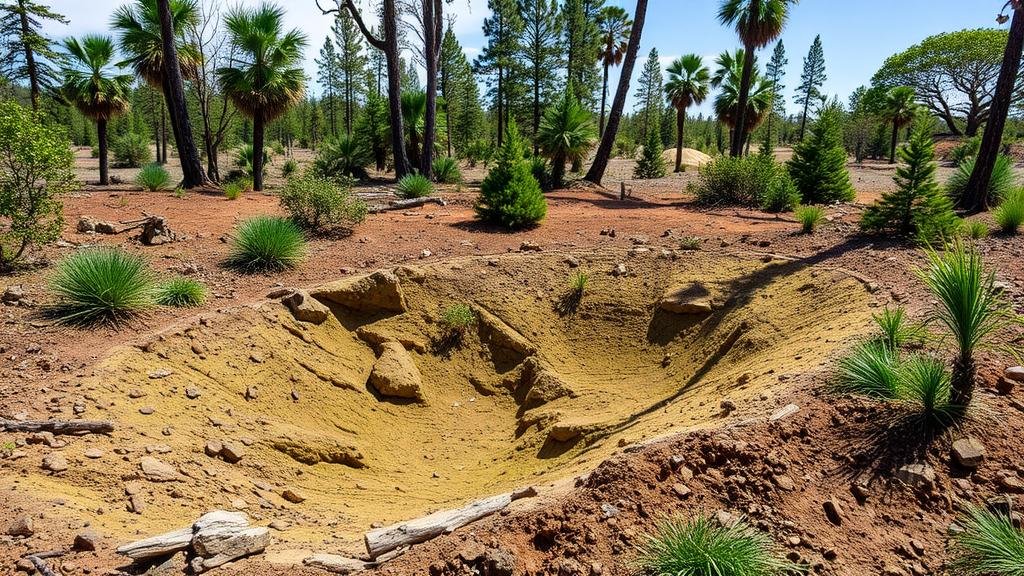Using Logical Triangulation to Locate Underground Relic Deposits
Using Logical Triangulation to Locate Underground Relic Deposits
The search for underground relics has always captivated historians, archaeologists, and treasure hunters alike. A sophisticated approach to locating these buried treasures is through logical triangulation. This method utilizes comparative analysis, positional data, and inferential reasoning to optimize search efforts. In this article, we will delve into the components of logical triangulation and explore its application in locating underground relic deposits.
Understanding Logical Triangulation
Logical triangulation is a systematic technique employed to derive precise locations by analyzing data from various sources. It is akin to a GPS system that uses multiple satellites to pinpoint a location accurately. Each satellite provides data that narrows down possible locations, and, similarly, triangulation uses multiple evidence points to refine the search area for underground relics.
In practice, logical triangulation involves three main steps:
- Data Collection: Gathering relevant information from historical records, maps, previous excavation sites, and eyewitness accounts.
- Comparative Analysis: Analyzing and comparing different sources of data to draw connections and infer potential locations.
- Geospatial Mapping: Utilizing technology such as GIS (Geographic Information Systems) to visualize and map potential relic sites for further exploration.
Data Sources and Their Relevance
The effectiveness of logical triangulation largely depends on the quality and relevance of the data collected. Common sources for data include historical texts, archaeological surveys, and contemporary land-use maps. For example, old county records might reveal areas known for specific trades or events, such as battles or settlements.
One noteworthy example occurred during the search for artifacts from the Civil War at a site in Virginia. Researchers utilized historical maps indicating troop movements and combined them with modern geospatial analysis to successfully locate several undiscovered relic deposits. This approach not only validated historical narratives but also contributed to a deeper understanding of the wars logistics.
Building a Triangulation Framework
Establishing a triangulation framework involves organizing collected data into categories based on distinct parameters, such as geographical location, historical significance, and documented evidence. This organizational structure allows researchers to visualize data correlations, leading to more informed decision-making regarding potential excavations.
For example, by charting the locations of known artifacts, archaeologists can create a concentric circle pattern around these sites and hypothesize where additional relics might be buried. This method was successfully implemented at the ancient Roman settlement of Pompeii, where structured excavation efforts led to the discovery of several previously unknown structures.
Technological Tools Leveraging Triangulation
Modern advancements in technology have significantly enhanced the capabilities of logical triangulation. Tools such as Ground Penetrating Radar (GPR), LiDAR (Light Detection and Ranging), and magnetometry have transformed how researchers identify potential locations for excavation.
For example, utilizing GPR allows for a non-invasive exploration of subsurface anomalies, providing images of potential relic deposits without disturbing the soil. In a project in England, GPR facilitated the identification of an ancient burial site beneath a farmers field, leading to a significant archaeological discovery by minimizing disruption to the surface environment.
Challenges and Limitations of Logical Triangulation
Despite its robustness, logical triangulation is not without challenges. The quality of the data collected can vary greatly, leading to erroneous conclusions if not adequately cross-verified. Also, the historical context of the data may be misinterpreted, especially if relying exclusively on a single source. As such, it’s crucial to employ a multi-faceted approach in triangulating positions.
Also, environmental factors such as urban development, natural erosion, and agricultural practices can obscure or destroy potential relic sites that were once viable for excavation. Archaeologists must remain flexible and adaptive, continually assessing and updating their triangulation strategies in response to these changing conditions.
Real-World Applications and Future Prospects
The application of logical triangulation extends beyond archaeology into areas such as urban planning and conservation efforts. For example, urban archaeologists in Rome leverage triangulation methods to identify sites of historical significance before new construction projects commence. This proactive approach safeguards valuable heritage while allowing for urban expansion.
Looking to the future, integrating artificial intelligence and machine learning will likely enhance logical triangulation methodologies. These technologies can process vast datasets quickly, identify patterns, and make predictive analyses, enabling archaeologists to locate relic deposits more efficiently than ever before.
Actionable Takeaways
To wrap up, logical triangulation is a powerful tool in the quest to discover underground relic deposits. Practitioners should focus on:
- Gathering high-quality, diverse data from multiple sources.
- Employing advanced technological tools to complement triangulation approaches.
- Maintaining a flexible strategy to adapt to unforeseen challenges.
By implementing these strategies, archaeologists and researchers can significantly enhance their chances of uncovering the hidden stories buried beneath our feet, illuminating the past for future generations.



